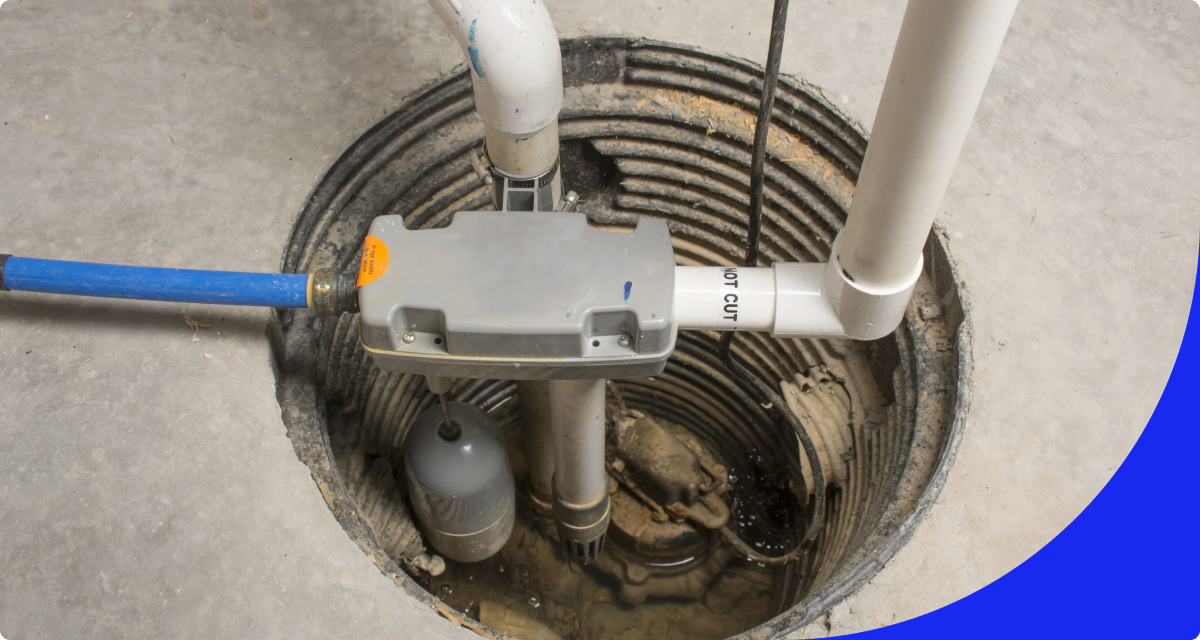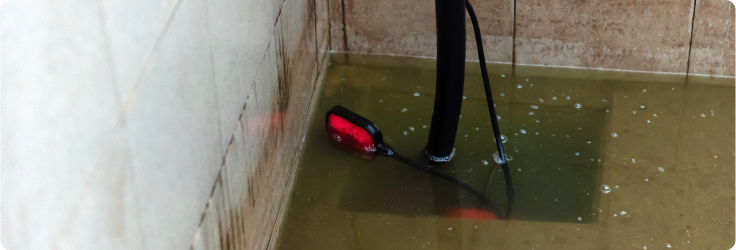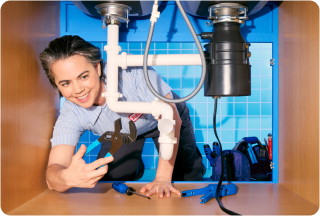Unplug your sump pump
Working on an electrified sump pump can be dangerous. Be sure to use safety equipment like gloves and googles, as well as completely power it off before maintaining it.
When it comes to safeguarding your home against flooding and water damage, your sump pump is essential. But like any hard-working device, your sump pump needs regular maintenance to function efficiently.

The sump pump quietly works behind the scenes to keep your basement and low-lying areas dry, ensuring your home’s foundation, appliances, and air quality remain protected from excess moisture. But without regular maintenance, you could face costly repairs, mold growth, or even electrical hazards. Explore our guide to sump pump inspection and maintenance.

A sump pump has an important job: Remove water from the basement and other low areas to prevent flooding and water damage. But what exactly is a sump pump and how does it work?
A sump pump works by sitting inside a sump pit—a small hole in the floor. When water accumulates inside the pit, a float attached to the sump pump activates the pump’s motor. Once the pump turns on, it diverts the water from the pit into a storm drain, well, or detention pond.
Like a septic pump, a sump pump diverts unwanted water out of the house into a separate, pre-planned location.
A well-maintained sump pump provides a few major advantages to your family and home. Those include:
Follow our sump pump maintenance checklist to keep it running efficiently throughout the year—which is especially important if you want to prevent basement floods:
Working on an electrified sump pump can be dangerous. Be sure to use safety equipment like gloves and googles, as well as completely power it off before maintaining it.
Over time, your sump basin may collect a wide variety of debris, such as bugs, sand, silt, small pieces of plastic, leaves, rocks, and twigs. Reach into the basin wearing gloves and lift the debris out, placing it in a nearby bucket.
This is an important step, and it can also become one of the most challenging, as you should refrain from damaging the pump or the pipe.
If the two seem inseparable, spray a tiny amount of WD-40 to loosen the connection. If you still feel resistance, there could be substantial mold build-up around the connection site. Spray a natural enzyme solution (like on the site to kill the mold. Wipe the mold away, then try again.
If you have an indoor sump pump, you’ll need to transport it somewhere more convenient for maintenance. Lift the pump into a large trash bag to prevent excessive spilling.
See how a plumbing protection plan can help with covered repairs.

A sump pump can get dirty, and cleaning it can make its surroundings equally dirty. Go outside or somewhere else you don’t mind making a mess before continuing to Step 6.
The most important action steps to follow:

The most important action steps to follow:
While an efficient sump pump is important, so is a clear drainage system. Verify that the discharge pipe:
Once the other steps are completed, return the sump pump to its original location and reconnect it to its power source and the drainage pipe. Power is the first thing to disconnect and last to reconnect on any plumbing device that requires electricity.
Here’s how to test your sump pump—and how to tell if your sump pump is working:
Your plumbing system stands up to a lot of wear and tear. From your sump pump battery to interior plumbing links to toilet stoppages, an American Home Shield home warranty takes care of many of your important plumbing problems so you don’t have to stress about unexpected breakdowns.
And the peace of mind doesn’t stop there. With coverage for up to 29 of your home’s major systems and appliances, American Home Shield home warranty plans extend from the sump pump in your basement to your kitchen dishwasher. That’s the kind of wide-ranging coverage worth getting excited about (and we certainly do!).
AHS assumes no responsibility, and specifically disclaims all liability, for your use of any and all information contained herein.